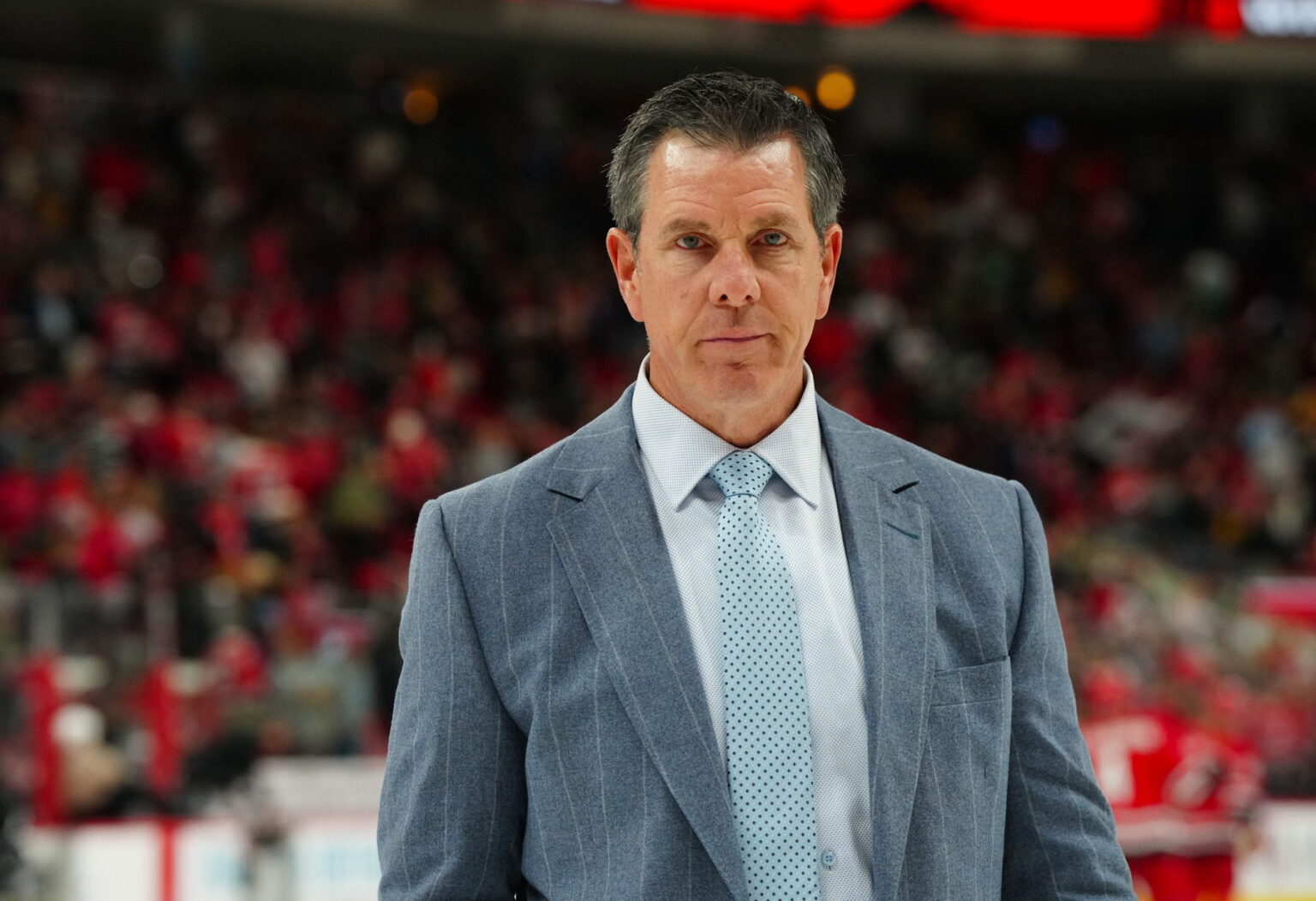With veteran coach Mike Sullivan joining the New York Rangers as their new bench boss, attention is turning to the roster he’ll have to work with next season. And while there are some interesting similarities between the current makeup of the Rangers and the Pittsburgh Penguins team Sullivan took over in 2015-16, it’s obvious the Blueshirts need to at least make a couple of significant roster changes.
In 2014-15, the Penguins had four players with a point-per-game average of higher than 0.75: defenseman Kris Letang (0.78), right winger Patric Hornqvist (0.80), center Evgeni Malkin (1.01), and center Sidney Crosby (1.09). But that offensive output stalled in a major way the following season under coach Mike Johnston, with Crosby’s point-per-game average dropping to 0.68, and only Malkin (0.93) having a point-per-game average better than 0.75.
So, when Sullivan took over from Johnston in December of 2015, his challenge was clear: instill confidence in Pittsburgh’s stars. And to Sullivan’s credit – as he led the Pens to a Stanley Cup championship that season – his Penguins players responded well. Hornqvist was back at 0.77, Malkin had a boost to 1.11, Letang improved to 1.15, and Crosby nearly doubled his output to 1.29.
You can see, then, what Sullivan’s challenge is with the Rangers, who had four players this season with a point-per-game average of 0.75 or better: star right winger Artemi Panarin (1.11), center J.T. Miller (1.09), defenseman Adam Fox (0.82), and center Mika Zibanejad (0.76).
Contrast that with the Blueshirts’ five producers of 0.75 points per game or better in 2023-24: Panarin (1.46), Fox (1.01), center Vincent Trocheck (0.94), left winger Chris Kreider (0.91) and Zibanejad (0.89). Sullivan’s job is to reinvigorate the Rangers’ veterans, and if the Blueshirts are to get back into the playoffs, he’ll need to be successful in that regard.
Still, it’s also clear there has to be some roster alteration to give the Rangers a different look next year. And although Rangers GM Chris Drury chose not to deal Kreider this season, we’d be lying if we said we didn’t expect Drury to pull the trigger on a Kreider trade this summer.
The 34-year-old Kreider had a sub-par year by his standards this season, but he still produced 22 goals and 30 points in 68 games. And while Kreider’s salary of $6.5-million runs for another two seasons, he has a modified no-trade clause that allows him to veto a deal to 15 of the league’s 31 other teams. That leaves 16 teams Kreider can be dealt to, and his track record of producing in the playoffs – he has 24 goals and 37 points in his most recent 43 playoff games – should make him attractive to many teams.
For instance, would an up-and-coming team like the Utah Hockey Club value Kreider’s skills? We think so, as Utah is a team in need of Kreider’s veteran knowhow. The same goes for the Buffalo Sabres and Detroit Red Wings, two teams in that they’re all trying to get over the hump and be a playoff squad next season. Thus, we can see Drury getting a decent deal for Kreider – even if it only means getting out from under Kreider’s cap hit and spending it elsewhere.
In any case, the Rangers definitely need to give Sullivan a rejigged roster to work with next season. Sullivan can infuse the Blueshirts’ returning players with the confidence he gave to the Penguins at the start of his very successful tenure, but he also needs a different chemistry mix for the Rangers to thrive. Because the way this season fell apart for the Rangers, they can’t run it back with the same group.
A different look has to happen for the Rangers, and if Drury can pull that off, the pressure will shift to Sullivan as he attempts to work his magic the way he did in Pittsburgh for nearly a full decade.
Get the
latest news and trending stories by following The Hockey News on Google News and by
subscribing to The Hockey News newsletter here. And share your thoughts by commenting below
the article on THN.com.
Read the full article here



